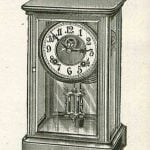Vise Jaw Liner – Your Thoughts
Welcome! / Forums / General Woodworking Discussions / Projects / Vise Jaw Liner – Your Thoughts
- This topic has 15 replies, 10 voices, and was last updated 3 years, 10 months ago by
 Nick van Beest.
Nick van Beest.
-
AuthorPosts
-
 3 January 2020 at 7:10 pm #642453
3 January 2020 at 7:10 pm #642453I don’t think it matters as long as they are flat. They will get hacked up any how! I like the leather in top.
3 January 2020 at 10:50 pm #642499Hej Jon,
My vice jaw-liners are out of beech. The proximal one is around 2″ and equipped with 3/4″ holes, while the distal jaw-liner is integrated with the front of the workbench. (Please see attached photo)
Compared to the prior pine liners, I think the beech ones give a firmer grip, particularly on thin materials secured along the top of the vice. Having the distal jaw-liner flush with the bench front, helps with clamping tall and wide stuff for work on their edges, which of course can be achieved in many other ways
Attachments:
You must be logged in to view attached files.Hello Jon,
luckily I got an offcut piece of oak around 1″ thick from a cabinetmakers shop.
I put pieces of 4mm thick cork tiles at the inside, because until now I mostly work with soft woods like spruce and pine and don’t want to have clamping marks from the hard jaw liners on the work pieces.E.
4 January 2020 at 8:11 pm #642774Hej Rob,
Thank you for asking. The vise is a quick release with the release mechanism operated by turning the screw. Vices with a separate release mechanism are probably preferable, but mine works OK as long as I give the screw 2 to 3 revolutions before pulling or pushing the front jaw.
My bench is made out of glulam, with the top consisting of two slabs glued together and resting on legs of the rails and stretchers type. Please see attached photos.
Attachments:
You must be logged in to view attached files.4 January 2020 at 8:29 pm #642782This has given me an idea how to make a more solid base for my bench in the workshop., thank you very much for the pictures.
Currently both my benches sit on my workmate, which is not the most stable base, nor the most massive. Now I need to see if I can design it to accomodate the planing beam as a permanent fixture, rather than the add on that it is now.4 January 2020 at 10:07 pm #642810Colin,
Thanks! I’m happy with whatever contribution I can make.*******
Rob, thanks for coming back!
Apart from that the Lie-Nielsen tail-vice would aesthetically have looked more pleasing, I’m well-contented with the Veritas QR one. It opens over a long distance, making it easy to fit most work pieces between the bench dogs; the QR mechanism works like a charm; the screw is most stable; and the jaw can be used for everything from holding pieces while rip/re-sawing to shooting (glulam is very flat).The assembly instructions were acceptably easy to follow. They stressed the benefits from mounting the vice with the bench top upside down, as well as precautions to take when switching the vice from right to left hand (basically, lock everything with blue-tape [please see photo]). One element of the assembly fairly much demands a 5/8″ [Forstner] drill bit. I did get away with a 16 mm one – not a pleasant experience for the drill bit.
The assembly manual suggests that the top surface of the moving jaw is made proud of the bench surface, and then planed flush. In my humble, that’s good advice.
Attachments:
You must be logged in to view attached files.
Hello,
Thanks for the feedback. It can be difficult to find thick hardwood where I am. I can find 3/4″ but am not sure that will be adequate.
I’m not sure if Paul uses 3/4″ or 1″. Hard to tell from the workbench build videos.
[attachment file=”642845″]
By planning this out I’m hoping to it right the first time.
Jon
Attachments:
You must be logged in to view attached files.5 January 2020 at 11:03 am #642984My vise liners are 2 pieces of 20mm pine, and they are just a bit proud of the top of the vise jaws. They also extend past the vise jaws because I wanted them to reach the edges of the bench. I also have 4mm cork on the inside, set down 5mm or so, primarily to give me a step to rest thinner pieces on, but it also assists if I am clamping something not quite square on the outer sides. The vases I made as christmas presents this year using split billets from dome firewood are an example of this need.
The vise is a 7″ Irwin Record in case that helps.[attachment file=”642985″]
Attachments:
You must be logged in to view attached files.5 January 2020 at 5:11 pm #643084In his 2012 workbench built, Paul used “buffalo plywood” (the kind used to pour concrete in it, treated with a phenolic resin) but he says any hardwood will do.
7 January 2020 at 12:53 am #643499My vise a wood classic leg vise with wood jaws. I lined it with a composite engine gasket material that believe is a mix of cork and rubber. I just glued it on with contact cement so that I can easily replace it in the future. I’m amazed at how well it holds stock with minimal vise pressure.

-
AuthorPosts
- You must be logged in to reply to this topic.
